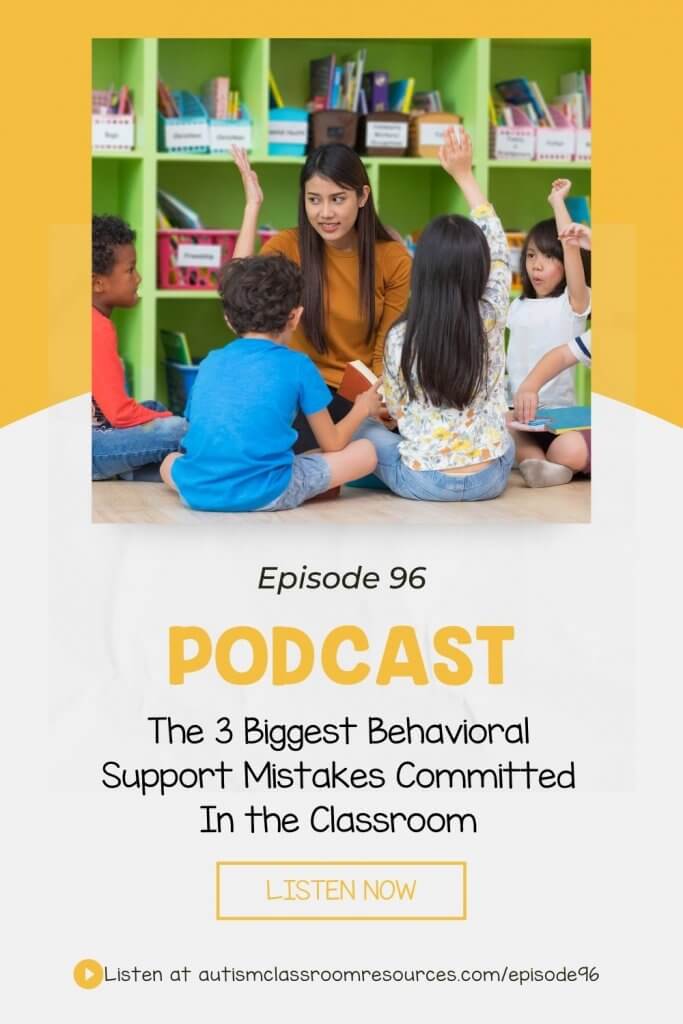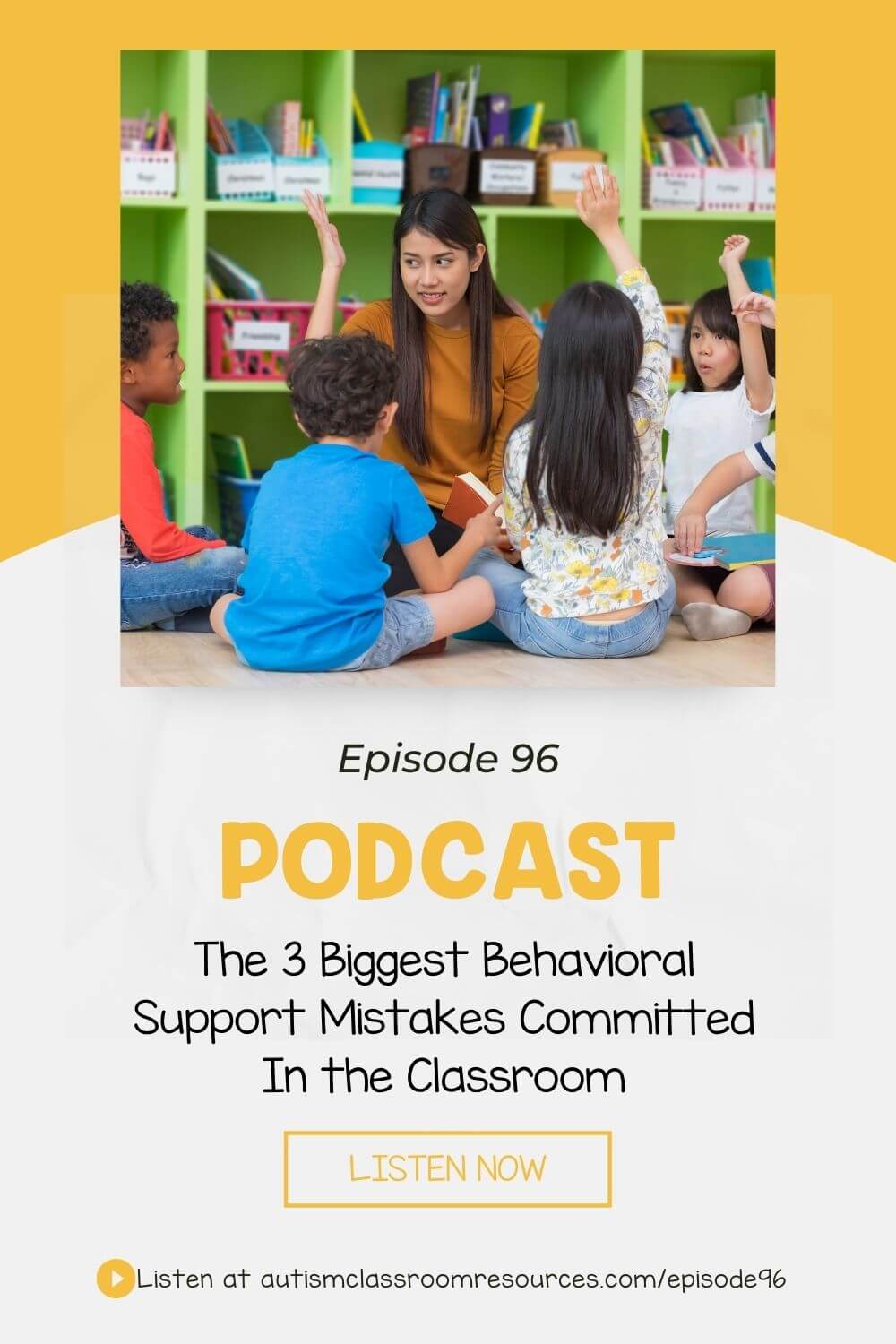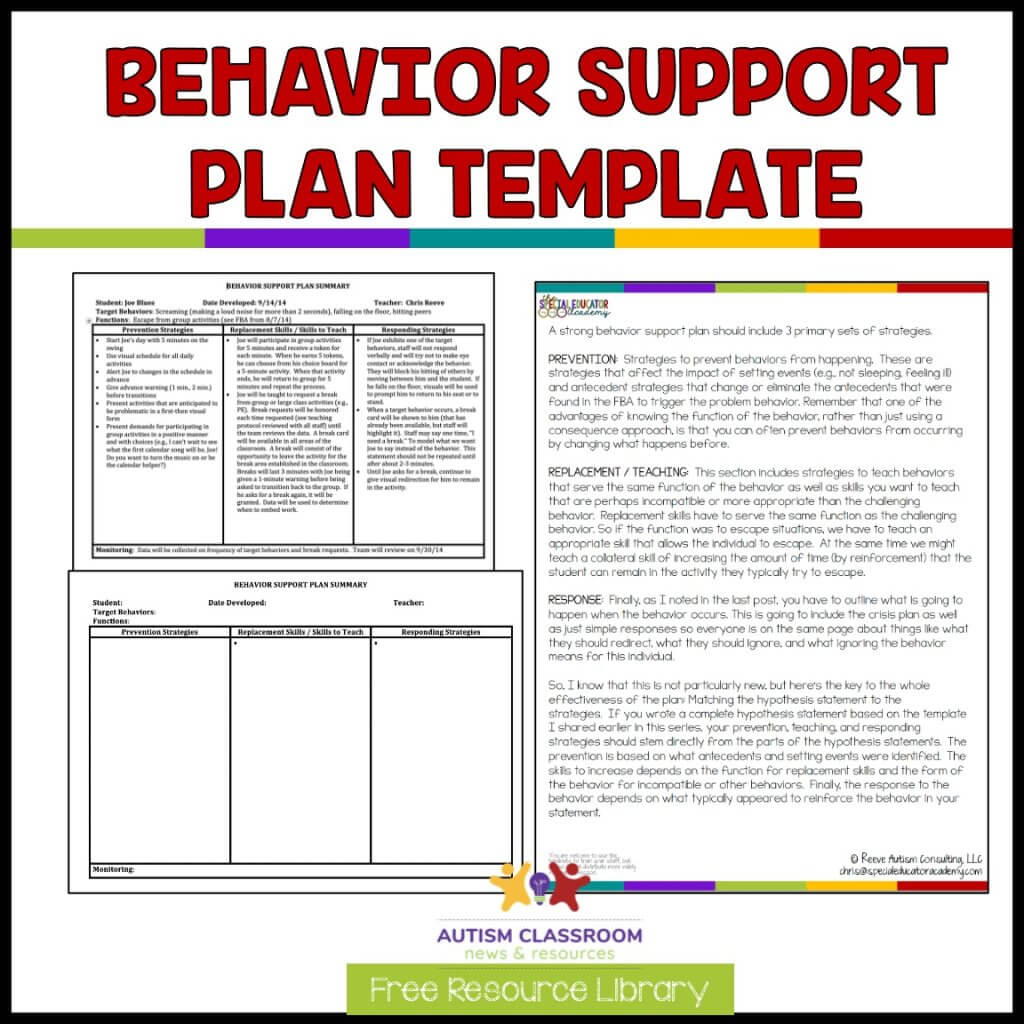Welcome to the Autism Classroom Resources Podcast, the podcast for special educators who are looking for personal and professional development.
Christine Reeve: I’m your host, Dr. Christine Reeve. For more than 20 years, I’ve worn lots of hats in special education but my real love is helping special educators like you. This podcast will give you tips and ways to implement research-based practices in a practical way in your classroom to make your job easier and more effective.
Welcome back to the Autism Classroom Resources Podcast. I am Christine Reeve. I’m your host. I am very glad that you’re joining us for a discussion about behavioral support because we are all probably dealing with some challenging behaviors at this time of year. At the time that I’m recording this, we are in the fall of 2021, so we have a bunch of stuff going on. Many students are readjusting to being back in the classroom and some students are adjusting to going in and out of the classroom due to quarantines. With that, it’s no question that we’re going to see some challenging behaviors increase that we probably haven’t seen before, so this seemed like a pretty good segue from our snack size troubleshooting episodes about dealing with what are typically behaviors from classroom support into talking just about behavioral support.
Now, I spend a lot of time talking about behavioral support on the podcast and on my blog, so I’ll put some links in the show notes for some past episodes, including a series on the process of assessing behavior through developing behavioral support. In today’s episode, I really want to focus on three of the biggest mistakes that I see in behavioral support and behavior management plans, and processes, but in addition to telling you what those mistakes are, I’ve got a couple of free downloads for you in the post that will help you avoid these mistakes. I’ll talk more about those during the episode. Let’s get started.
If you’ve listened to any of my earlier podcasts about behavior or read any of my blog posts, then you’ve heard me talk about the importance of determining the function of challenging behavior. It won’t be at all surprising to hear me say that the number one mistake that I see in behavior plans is not addressing the function of the behavior in the plan. Now, that seems really astonishing if you’ve actually done an FBA but we actually have a lot of good research that indicates a large percentage of behavioral support plans in schools are written after an FBA is completed but it doesn’t address the function of the behavior. Sometimes, that happens because the team didn’t feel that it could determine what the function was or it happens because they did the FBA, then they just put it aside and wrote a plan on their own that wasn’t related to it. I’m serious. Teams actually do this. They actually do a whole FBA, then don’t include that information in the plan. It makes no sense to me but it happens. I will not scream. I want to but I will not scream.
Why spend the time doing an FBA if you aren’t going to use it? But more importantly, if you have a plan that doesn’t address the function of the behavior, chances are it isn’t going to work or it isn’t going to work for long. Many times, I have people ask me what do I do about spitting or what do I do about biting? But the question that we need to be asking is what do I do about a behavior that happens because it results in the staff all needing to attend to him to keep everybody safe? Without addressing the function, we’re just throwing strategies at a problem with no reason to expect that they’re going to work. That’s why the FBA is so important. That’s why we spend that time. That’s mistake number one. Doing the FBA, then putting it in a file cabinet, and not making sure that our strategies are really focused on that function.
The second biggest mistake that I see is when the behavior support plan doesn’t include a replacement behavior that serves the same function as the challenging behavior. That happens in part because sometimes, people don’t really understand what a replacement behavior is. They think they have a replacement behavior but it really isn’t serving the same function or they’re just not including a replacement behavior. Let me give you an example of what that means, what a replacement behavior is. Let’s say that the FBA tells us that Jim is getting out of his seat frequently and the function is because it gets a lot of reaction, and attention from peers in the classroom. If we write a behavior plan that just focuses on reinforcing Jim for staying in his seat, then that might work temporarily because we’re reinforcing a behavior that’s incompatible with our problem behavior. We’re reinforcing a behavior that if he’s in his seat, he can’t be out of his seat. But it doesn’t give him a way to get that attention and reaction from his peers the way that getting out of his seat, moving around the classroom does, because we didn’t teach him a replacement skill that served that function.
If we think about Jim’s life, he really wants to get that attention. He really needs it. He doesn’t have a better way to get that met. We all want that attention. We just use other ways to get it. That is something that he needs. He needs a way to get that interaction. We need to be thinking about how our behavioral supports support our students’ quality of life. A replacement behavior that we might teach him is simply how to ask for attention or it could be something more complex, like how to tell jokes that get a big laugh or other more complex social skills to help him get those reactions. It really depends on what kinds of reactions we’re expecting him to get. Those are behaviors that serve the same function. We want to make sure that we’re matching those behaviors to the kinds of reactions that he’s getting in his environment because those are the kinds of behaviors that will sustain behavior change over time. We want to make sure that what we’re teaching him is a true replacement behavior.
One of the freebies that I have for you on the blog post in the Resource Library is actually an organizer, graphic organizer that helps you take the information from your FBA and take it, and develop a hypothesis statement that matches up specifically to what your function information tells you. It takes the information from your FBA and helps you match it up to when he does this, this is what happens, which then should match directly onto what your replacement behavior should be. I also have a support plan that matches directly to that replacement hypothesis. Your hypothesis statement should match directly onto your replacement behavior. When this happens, Jim does this and this is the outcome in the environment. That should match directly onto your prevention strategies, which matches on to what is happening in the environment when the behavior begins. This is what I want the replacement behavior to be. The outcome is that Jim’s getting that reaction or that attention. I’ll give you the links as well to some of the posts and podcasts that talk about that process in more detail but that is a huge issue that we see in the field. We actually have some research that shows that we have to have those components to really make a difference.
Finally, the third mistake that I see is that we write a plan addressing the function with appropriate replacement behaviors but we don’t set up times for specific explicit instruction to teach that replacement behavior. We have a tendency to think we’ll reinforce it when that opportunity presents itself, when there’s going to be a problem. We tend to think that when Jim gets out of a seat, we’ll take that opportunity to teach it. We’ll just reinforce that behavior and prompt it when that problem happens but there are a couple problems with that thinking. First, if we wait for a natural opportunity to practice, then we’re really only going to be teaching at a time when the student is really wanting that reaction. That part of it is good but that also means that we’re only teaching it when his tensions are running high. Let’s think about our escape-related behavior. If Jim is getting out of his seat to escape from something, he probably might be pretty frustrated by the time he got to that point. That means he might be pretty agitated.
Do you learn well when you’re pretty agitated or emotional? Most of us don’t process really well at that time. Those are not really good learning opportunities. We’re not making good decisions at those times. It really helps to practice those skills when things are calm. The beauty of positive behavioral support using replacement behaviors is that we can teach these skills when the behaviors aren’t at a high level of anxiety, frustration, upset, bad problem solving time when the behavior isn’t imminent. You don’t have to wait for the behaviors to happen, then respond. We’re teaching proactive strategies. That means that we can teach when the behavior is calm, when the student is calm. That’s a much better teaching time.
The second reason that this is important is because there simply are not enough of those opportunities for our students to practice the skill if we wait for those natural opportunities. Our students need lots of practice to learn new skills. They just do. Think about this type of practice as strength training in a workout routine. I might get enough reps on a general day around my house to build my tricep skills if I was moving to a new apartment or maybe if I was cleaning up my office only because there’s a bunch of junk in it, I have to move around, but probably not three times a week or every day. I’m going to be much more successful building those tricep muscles if three days a week I have reps that I do with my free weights, if I build it into a regular routine, and I practice that three days a week. It’s the same thing with practicing replacement skills with our students. They need concentrated practice for these skills to build new habits. They need to practice them and over practice them, so we can build it into natural routines. But we want to get multiple opportunities for them to practice as well, so we can build it into their natural opportunities but we want to add in some extra practice as well. We can build it into natural things that are happening. Just beef up the number of opportunities that we’re doing.
There we have the three most common mistakes that I see with behavioral support. Number one is not basing the behavior support plan on the FBA, number two is not teaching a replacement behavior that’s really based on the function of the behavior, and number three is not getting enough practice and repetition of teaching the replacement behavior. If you’re looking for help in making sure that you’ve got all those pieces in your support plans, I’ve got that graphic organizer that I use to make sure that the data from the FBA maps directly onto your hypothesis statement and that your hypothesis statement matches directly onto your support plan. That free template for your behavior plan is there as well. You can download them both. Hop over to autismclassroomresources.com/episode96 and you can grab those, and a transcript of this episode.
If you’re looking for more help with challenging behavior, we’ve got a whole course on behavioral problem solving and tons of workshops, lightning training, and other kinds of support in the Special Educator Academy. Come try seven-days free of training support and tools to help you be more successful, and feel more confident in your job. As always, thank you so much for spending time with me. I hope that you will come back next week when I will be talking more about challenging behavior. Until then, I’ll just be over here thinking about how many reps it takes for fifth graders to strengthen their attention-seeking skills.









